Diethylamino hydroxybenzoyl hexyl benzoate
Synonym(s):DHHB;Diethylamino hydroxybenzoyl hexyl benzoate
- CAS NO.:302776-68-7
- Empirical Formula: C24H31NO4
- Molecular Weight: 397.51
- MDL number: MFCD11616752
- EINECS: 443-860-6
- SAFETY DATA SHEET (SDS)
- Update Date: 2025-12-17 09:49:54
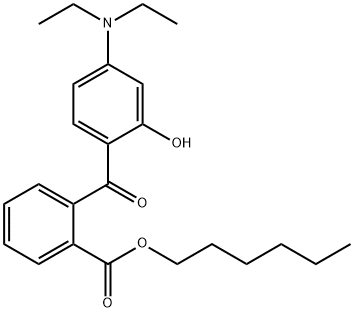
What is Diethylamino hydroxybenzoyl hexyl benzoate?
Absorption
Based on the findings of a rat study assessing dermal or percutaneous absorption, only a minor amount of diethylamino hydroxybenzoyl hexyl benzoate will undergo percutaneous absorption and most of the compounds will remain in the upper layers of the stratum corneum . In rat and porcine skin, the percutaneous absorption was 0.10 ± 0.12 μg/cm^2 or 0.04 ± 0.05% .
Toxicity
In a rat acute oral toxicity study, median LD50 value was reported to be >2000 mg/kg . No case of overdose has been reported. Diethylamino hydroxybenzoyl hexyl benzoate was not shown to be mutagenic, clastogenic, or phototoxic in vitro . The no observed adverse effect level (NOAEL) 200 mg/kg bw/day for maternal toxicity, and 1000 mg/kg bw/day (highest applied dose) for prenatal developmental toxicity .
Description
Diethylamino hydroxybenzoyl hexyl benzoate is an organic compound belonging to the class of benzophenones, commercially used as UVA filter and is anticipated to provide reliable protection against free radicals and premature skin aging, mainly caused by shortwave UVA radiations.
The Uses of Diethylamino hydroxybenzoyl hexyl benzoate
Diethylamino hydroxybenzoyl hexyl benzoate is a UV filter with high absorption in the UV-A range. Minimizing the overexposure of human skin to ultraviolet radiation that may lead to acute and chronic photodamage, diethylamino hydroxybenzoyl hexyl benzoate is an oil-soluble UV filter that may be incorporated in the oil phase of emulsions. Diethylamino hydroxybenzoyl hexyl benzoate was approved in Europe in 2005, and is also marketed in the U.S., South America, Mexico, Japan and Taiwan. It has a chemical structure similar to the classical benxophoenone drug class, and displays good photostability. It is used in concentrations up to 10% in sunscreen products, either alone or in combination with other UV absorbers.
The Uses of Diethylamino hydroxybenzoyl hexyl benzoate
Uvinul A Plus is a component of cosmetic emulsion with UV protection.
Background
Diethylamino hydroxybenzoyl hexyl benzoate is a UV filter with high absorption in the UV-A range. Minimizing the overexposure of human skin to ultraviolet radiation that may lead to acute and chronic photodamage, diethylamino hydroxybenzoyl hexyl benzoate is an oil-soluble UV filter that may be incorporated in the oil phase of emulsions . Diethylamino hydroxybenzoyl hexyl benzoate was approved in Europe in 2005, and is also marketed in the U.S., South America, Mexico, Japan and Taiwan. It has a chemical structure similar to the classical benxophoenone drug class, and displays good photostability . It is used in concentrations up to 10% in sunscreen products, either alone or in combination with other UV absorbers .
Indications
Indicated for use as a sunscreen agent.
Definition
ChEBI: Diethylamino hydroxybenzoyl hexyl benzoate is a member of benzophenones.
Flammability and Explosibility
Non flammable
Pharmacokinetics
Diethylamino hydroxybenzoyl hexyl benzoate is an organic UV filter that attenuates the exposure of UV radiation on human skin . In vitro, topical application of diethylamino hydroxybenzoyl hexyl benzoate exerted an anti-inflammatory effect on inflammation-evoked mouse ears by inhibiting oedema formation .
Safety Profile
Diethylamino Hydroxybenzoyl Hexyl Benzoate is generally regarded as safe for cosmetic use. It has a low likelihood of causing skin irritation or allergies. Concerns about cancer risk due to its use in cosmetics are largely unsubstantiated, but research is ongoing. However, pregnant individuals should consult with a healthcare professional before use.
Synthesis
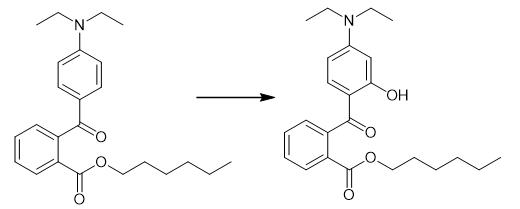
Expose
3 mL of a 0.018 mg/mL solution of 3-diethylaminophenyl
2-hexanoxycarbonylbenzoate in methanol to UV-B radiation in a Luzchem
LZC-4 photoreactor equipped with 16 broad band UV-B lamps (LES-UVB-01)
at 35 °C to obtain Diethylamino hydroxybenzoyl hexyl benzoate.
in vitro
Diethylamino hydroxybenzoyl hexyl benzoate (DHHB) absorbs UV-A radiation with a peak at 354 nm. The molar absorption coefficient of Diethylamino hydroxybenzoyl hexyl benzoate in EtOH at 25°C is obtained to be 39 000 mol/dm 3 /cm at 354 nm. The emission spectrum of Diethylamino hydroxybenzoyl hexyl benzoate in EtOH is dependent on the excitation wavelength.
Metabolism
In steady-state and transient photolysis experiments in vitro, diethylamino hydroxybenzoyl hexyl benzoate may be oxidized by H2O2/UV to form degradation products . Like other UV filters, diethylamino hydroxybenzoyl hexyl benzoate may be subject to photodegradation upon absorption of UV radiation, which results in the compound passing from a ground state to either a singlet or triplet excited state .
Research
In recent years, research involving DHHB in the environmental area has included mass spectrometry studies of its chlorination products, chlorination kinetics, and pathways; detection of the metabolites in humans; degradation under UV/H2O2 treatment, including the effects of pH and DHHB initial concentrations. Since UV filters, such as DHHB, may result in adverse environmental impacts, it is essential to examine processes, such as the Chlorination and Solar/Chlorine processes, that the UV filters are exposed to in swimming pools. This examination should include the UV filter degradation rates and its degradation mechanism, including the effects of various matrix components in swimming pool waters[1].
References
[1] Panduo Shan . “Transformation and toxicity studies of UV filter diethylamino hydroxybenzoyl hexyl benzoate in the swimming pools.” Science of the Total Environment 881 (2023): Article 163498.
[2] A. Sobańska, E. Brzezińska. “Simultaneous NP TLC Analysis of the Sunscreens Diethylamino Hydroxybenzoyl Hexyl Benzoate and Octyl Methoxycinnamate.” Jpc-journal of Planar Chromatography-modern Tlc 14 1 (2011): 227–231.
Properties of Diethylamino hydroxybenzoyl hexyl benzoate
| Boiling point: | 524.8±40.0 °C(Predicted) |
| Density | 1.112±0.06 g/cm3(Predicted) |
| vapor pressure | 0Pa at 20℃ |
| storage temp. | Inert atmosphere,Room Temperature |
| solubility | Acetonitrile (Slightly), Chloroform (Slightly), DMSO (Slightly), Ethyl Acetate ( |
| form | neat |
| pka | 7.57±0.35(Predicted) |
| form | Solid |
| color | White to Yellow |
| Water Solubility | 16μg/L at 20℃ |
| InChI | InChI=1S/C24H31NO4/c1-4-7-8-11-16-29-24(28)20-13-10-9-12-19(20)23(27)21-15-14-18(17-22(21)26)25(5-2)6-3/h9-10,12-15,17,26H,4-8,11,16H2,1-3H3 |
Safety information for Diethylamino hydroxybenzoyl hexyl benzoate
| Signal word | Warning |
| Pictogram(s) |
 Exclamation Mark Irritant GHS07 |
| GHS Hazard Statements |
H302:Acute toxicity,oral |
| Precautionary Statement Codes |
P280:Wear protective gloves/protective clothing/eye protection/face protection. P305+P351+P338:IF IN EYES: Rinse cautiously with water for several minutes. Remove contact lenses, if present and easy to do. Continuerinsing. |
Computed Descriptors for Diethylamino hydroxybenzoyl hexyl benzoate
| InChIKey | FDATWRLUYRHCJE-UHFFFAOYSA-N |
| SMILES | C(OCCCCCC)(=O)C1=CC=CC=C1C(=O)C1=CC=C(N(CC)CC)C=C1O |
New Products
4,4-Difluoropiperidine hydrochloride tert-butyl 9-methoxy-3-azaspiro[5.5]undecane-3-carboxylate Indole Methyl Resin N-Isopropylurea N,N-Dicyclohexylcarbodiimide(DCC) MELDRUMS ACID 5-METHYLISOXAZOLE-4-CARBOXYLIC ACID Magnessium Bis glycinate Zinc ascorbate 1-bromo-2-butyne 2-acetamidophenol 9(10H)-anthracenone Erythrosin B, 4-Piperidinopiperidine 2-((4-morpholinophenylamino) (methylthio) methylene) malononitrile 2,4-dihydroxybenzaldehyde 3-(4-morpholinophenylamino)-5-amino-1H-pyrazole-4-carbonitrile Methyl 2-methylquinoline-6-carboxylate 2,6-dichloro-4-nitropyridine 4-Bromo-2-chlorobenzonitrile 2-(benzylamino)acetic acid hydrochloride 4-(tert-Butoxycarbonylamino)but- 2-ynoic acid 3,4-dihydro-2H-benzo[b][1,4]dioxepine 1-Phenyl-1-cycloprppanecarboxylicacidRelated products of tetrahydrofuran
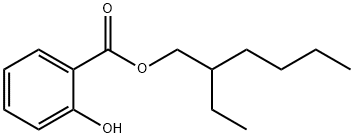
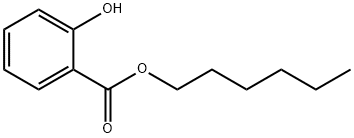
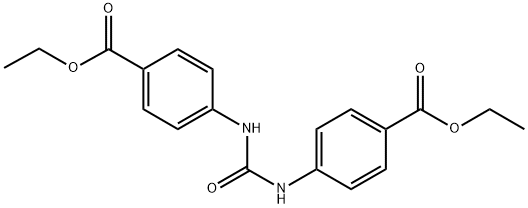

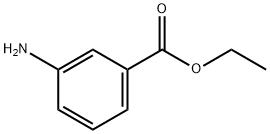

![4-[(1-Oxoheptyl)amino]benzoic Acid Ethyl Ester](https://img.chemicalbook.in/CAS/20210111/GIF/86927-24-4.gif)

You may like
-
![Hexyl 2-[4-(diethylamino)-2-hydroxybenzoyl]benzoate 302776-68-7 99%](https://img.chemicalbook.in//Content/image/CP5.jpg) Hexyl 2-[4-(diethylamino)-2-hydroxybenzoyl]benzoate 302776-68-7 99%View Details
Hexyl 2-[4-(diethylamino)-2-hydroxybenzoyl]benzoate 302776-68-7 99%View Details
302776-68-7 -
 Hexyl 2-(4-(diethylamino)-2-hydroxybenzoyl)benzoate 98% CAS 302776-68-7View Details
Hexyl 2-(4-(diethylamino)-2-hydroxybenzoyl)benzoate 98% CAS 302776-68-7View Details
302776-68-7 -
 Hexyl 2-(3-(diethylamino)-2-hydroxybenzoyl)benzoate 95% CAS 302776-68-7View Details
Hexyl 2-(3-(diethylamino)-2-hydroxybenzoyl)benzoate 95% CAS 302776-68-7View Details
302776-68-7 -
![Hexyl 2-[4-(diethylamino)-2-hydroxybenzoyl]benzoate CAS 302776-68-7](https://img.chemicalbook.in//Content/image/CP5.jpg) Hexyl 2-[4-(diethylamino)-2-hydroxybenzoyl]benzoate CAS 302776-68-7View Details
Hexyl 2-[4-(diethylamino)-2-hydroxybenzoyl]benzoate CAS 302776-68-7View Details
302776-68-7 -
 3-(4-amino-1-oxoisoindolin-2-yl)-1-methylpiperidine-2,6-dione 98%View Details
3-(4-amino-1-oxoisoindolin-2-yl)-1-methylpiperidine-2,6-dione 98%View Details -
 20677-73-0 (2,2-diethoxyethyl)methylamine 98%View Details
20677-73-0 (2,2-diethoxyethyl)methylamine 98%View Details
20677-73-0 -
 3-(4-(hydroxyamino)-1-oxoisoindolin-2-yl)piperidine-2,6-dione 98%View Details
3-(4-(hydroxyamino)-1-oxoisoindolin-2-yl)piperidine-2,6-dione 98%View Details -
 57381-49-4 2-bromo-4-chlorobenzonitrile 98%View Details
57381-49-4 2-bromo-4-chlorobenzonitrile 98%View Details
57381-49-4
